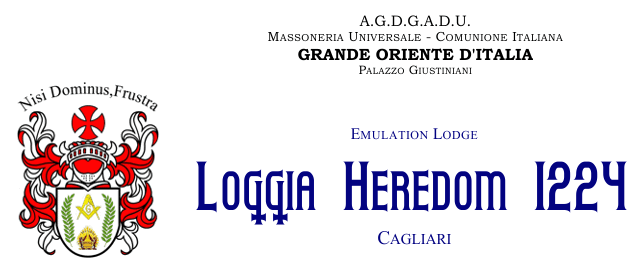
Masonic lodges in the American colonies began issuing credentials to new initiates in the mid-1700s. These documents, when presented at another Masonic lodge, helped prove the holder was a Freemason in good standing—a brother entitled to a warm welcome, hospitality and, in some cases, charity. A selection of historic Masonic certificates from the collection dating from the 1700s and 1800s is now on view in the Scottish Rite Masonic Museum and Library’s corridor exhibition area.
The signatures of lodge officers and of the certificate’s owner helped make these documents official, as did an impression of the issuing lodge’s seal (see example of a lodge seal below). Certificates from the handful of lodges that met in the mid-1700s, if issued at all, were handwritten on long-lasting parchment. In the late 1700s and early 1800s, lodges commissioned artists to design printed certificates. Many artists modeled their certificates on English examples; others designed entirely new creations. In the early 1800s engraved certificates featured, along with the text, images that related to Freemasonry’s teachings, what the Grand Lodge of Massachusetts described, in 1801, as “device[s] emblematical of, and suited to, the Genius and Design of Freemasonry.”
Some engravers created certificates specifically for individual lodges; others crafted flexible or “open” certificates with spaces that allowed different lodge names and locations to be filled in along with the Master Mason’s name and the date he received the degree, like this one (at left) engraved by Charles Cushing Wright (1796-1854) at the beginning of his career.
Royal Arch Mason Certificate, 1823. Issued to John F. Kern, Jr. (1800-1874), Laurens County, South Carolina. Engraved by Charles Cushing Wright (1796-1846) and Daniel H. Smith, Charleston, South Carolina. Museum Purchase, A85/030.
Wright, a peripatetic craftsman, also had a hand in designing this Royal Arch certificate in the 1820s (at right). He and his partner based this design on certificate issued by the Grand Royal Arch Chapter of England in 1792. Regardless of when and where the certificates displayed in “Signed and Sealed: Masonic Certificates” originated, each tells a story of how the issuing organization wished to be perceived and bears the name of a Freemason who was proud of his membership.
Interested in Masonic certificates? You can explore the Museum’s holdings not only in the exhibition but also using the Van Gorden-Williams Library & Archives Digital Collections website which provides access to images of an exciting selection of documents in the collection.

